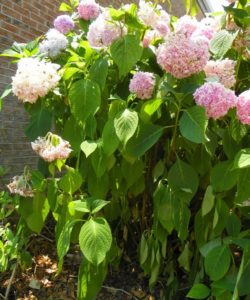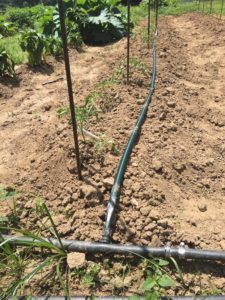Heat Survival Kit: How to Water Your Garden in a Heat Wave
go.ncsu.edu/readext?611213
en Español / em Português
El inglés es el idioma de control de esta página. En la medida en que haya algún conflicto entre la traducción al inglés y la traducción, el inglés prevalece.
Al hacer clic en el enlace de traducción se activa un servicio de traducción gratuito para convertir la página al español. Al igual que con cualquier traducción por Internet, la conversión no es sensible al contexto y puede que no traduzca el texto en su significado original. NC State Extension no garantiza la exactitud del texto traducido. Por favor, tenga en cuenta que algunas aplicaciones y/o servicios pueden no funcionar como se espera cuando se traducen.
Português
Inglês é o idioma de controle desta página. Na medida que haja algum conflito entre o texto original em Inglês e a tradução, o Inglês prevalece.
Ao clicar no link de tradução, um serviço gratuito de tradução será ativado para converter a página para o Português. Como em qualquer tradução pela internet, a conversão não é sensivel ao contexto e pode não ocorrer a tradução para o significado orginal. O serviço de Extensão da Carolina do Norte (NC State Extension) não garante a exatidão do texto traduzido. Por favor, observe que algumas funções ou serviços podem não funcionar como esperado após a tradução.
English
English is the controlling language of this page. To the extent there is any conflict between the English text and the translation, English controls.
Clicking on the translation link activates a free translation service to convert the page to Spanish. As with any Internet translation, the conversion is not context-sensitive and may not translate the text to its original meaning. NC State Extension does not guarantee the accuracy of the translated text. Please note that some applications and/or services may not function as expected when translated.
Collapse ▲Over the past few years, we have seen two different weather patterns: hot and dry for a few weeks followed by intense rainfall. These weather extremes are becoming more common. As we head into July, heat waves and drought periods will likely get longer and more intense. Growing resilient plants in weather extremes begins with wise planning (tips for how to design a weather-smart garden). But there are steps you can take this season to grow a successful garden when temperatures soar.

Wilted leaves are one of the first signs of water stress. Hydrangeas are more drought sensitive than most shrubs (N.C. Cooperative Extension, 2014).
Quick science lesson
Plants are cooled by water evaporation from leaf surfaces. This process is called transpiration. During a heat wave, a plant loses more water because there is more transpiration. At the same time, the plant goes into “defense mode” by slowing its growth and fruiting, and doesn’t take up as much water. This makes watering during a heatwave tricky. Signs of heat stress are curled leaves, loss of green color, and wilting. The plant may drop flowers and fruit to survive.
Before a heat wave
Prepare your garden for high temperatures by keeping plants well-hydrated. Water 24-48 hours before the onset of heat. This can lower the air and soil temperature around plants. Apply 3-4 inches of straw or leaf mulch to reduce evaporation and conserve water. Organic mulches shade the soil surface, keeping soil near plant roots cool and moist.
During a heat wave
Watering at the right time, right way, and right amount is crucial for plant survival and productivity during a heat wave. Flowering to harvest is the most critical period when plants need sufficient water.
Right time
It is tempting to water when plant leaves wilt, but this doesn’t mean it is time to turn on the hose. Plants can wilt even when the soil is wet if the roots are unable to take up water. This can be caused by root damage, disease, or even too much water because roots need oxygen too!
Check the soil to decide when it is time to water. Insert your index finger into the soil 1-2 in deep. If you feel moisture beneath the surface, wait to water. On average, gardens require 1 in of water per week. However, daily watering may be needed during periods of excessive heat. Keep your soil type in mind: sandy soil which drains rapidly will need more frequent watering than heavy, clay soil.
Right way
“Long and slow” is the key. Apply water directly to the soil (not on plant leaves) within the dripline where fine roots are present. This is best done with a drip irrigation system or soaker hose. Avoid overhead watering to prevent leaf wetting and reduce water loss from evaporation. Morning is the best time of day to water. Watering early reduces the risk of foliar disease due to leaves remaining wet overnight.
Right amount
Apply enough water to moisten the soil in the plant root zone. This depends on the plant type; trees and shrubs with deep roots will require longer watering than small seedlings. Check the soil moisture about 1 hour after watering by digging a 6-8 inch deep hole to ensure water has reached this depth. Avoid shallow and frequent “sprinklings” which encourage roots to grow near the soil surface.
Tomato Tip: watering consistently can prevent plant disorders like blossom end rot.





